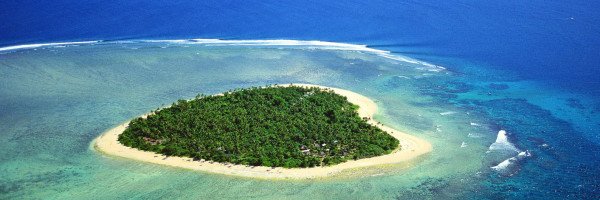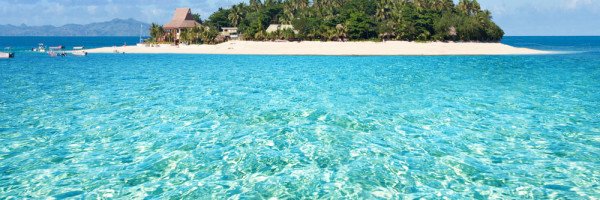The Historical Context of the Polynesian Migration
The Great Migration of Polynesians is a fascinating tale of seafaring skill and cultural resilience. Starting around 1000 BCE, these early navigators set forth from Southeast Asia, traversing vast oceanic distances to establish communities across the Pacific Islands. Among these islands, Fiji emerged as a significant waypoint and cultural crossroads, forming a link between the Polynesians and the indigenous tribes of New Zealand. The migration was not just a quest for land but also a search for resources, trade opportunities, and the expansion of social networks. Fiji’s indigenous tribes, particularly the iTaukei, have roots that can be traced back to these early Polynesian voyagers. Their traditions, languages, and social structures reflect a blend of influences from both Fiji and New Zealand, demonstrating the interconnectedness of these cultures. The patterns of settlement, the navigation techniques, and the oral histories passed down through generations provide invaluable insights into this intricate web of migration. Exploring these historical contexts reveals how the cultural exchanges during the migration have shaped the identities of both Fiji and New Zealand. For those interested in learning more about the rich cultural heritage of Fiji, visit Fiji Islands.The Cultural Tapestry of Fiji’s Indigenous Tribes
Fiji’s indigenous tribes, known as the iTaukei, boast a vibrant cultural tapestry woven from ancient traditions, languages, and customs. The iTaukei’s social structure is deeply rooted in communal living, with each tribe or “vanua” having its own unique identity and traditions. This communal approach is reminiscent of the Maori culture in New Zealand, where kinship and community play pivotal roles in daily life. One of the most striking elements of iTaukei culture is their oral history, which serves as a vehicle for preserving ancestral knowledge and teachings. Stories of creation, migration, and the interconnections with other Polynesian cultures are passed down through generations, ensuring that the legacy of their ancestors remains alive. Festivals, traditional dances, and ceremonies, such as the Meke dance, showcase the rich artistic expressions that have been influenced by both their local environment and their shared Polynesian heritage. For travelers wanting to experience the depth of Fiji’s indigenous culture, the Fiji Islands offer opportunities to engage with local tribes, participate in cultural ceremonies, and witness the vibrant traditions firsthand.The Linguistic Links Between Fiji and New Zealand
Language serves as a powerful link between cultures, and the linguistic connections between the indigenous tribes of Fiji and New Zealand provide intriguing insights into their shared history. The languages spoken by the iTaukei and the Maori share common roots, reflecting their shared Polynesian ancestry. Linguists have noted similarities in vocabulary, syntax, and phonetics, suggesting that these languages evolved from a common ancestral tongue. The preservation of language is vital for maintaining cultural identity. In Fiji, the iTaukei language is not only a means of communication but also a vessel for cultural expression and storytelling. Similarly, the Maori language plays a crucial role in New Zealand, with ongoing revitalization efforts to ensure its survival among younger generations. Learning about these languages offers a glimpse into the values, beliefs, and histories of both cultures. For those interested in linguistic studies or the language itself, exploring resources in the Fiji Islands can provide a deeper understanding of the iTaukei language and its connections to Maori.Traditional Navigation: A Shared Heritage
The art of navigation is a defining characteristic of Polynesian culture, and both Fiji’s indigenous tribes and New Zealand’s Maori share a rich heritage of seafaring. Ancient navigators relied on the stars, ocean currents, and the behavior of marine life to guide their journeys across the Pacific. These skills were essential for discovering and settling new lands, a testament to the innovation and bravery of their ancestors. In Fiji, traditional navigation techniques are still celebrated today. The revival of sailing canoes and the practice of celestial navigation not only honor this heritage but also foster a sense of community and identity among the iTaukei. Similarly, in New Zealand, the revival of traditional waka (canoe) building and voyaging has become an important part of Maori cultural renaissance. For those interested in experiencing the maritime traditions of Fiji, the Fiji Islands offer opportunities to participate in sailing excursions and learn about the ancient navigation methods that connect these cultures.Spiritual Beliefs and Practices
Spirituality is a cornerstone of both Fiji’s indigenous tribes and the Maori of New Zealand. The belief systems of these cultures are deeply intertwined with nature, ancestors, and the cosmos. In Fiji, the iTaukei people hold a profound respect for their environment, often viewing land and sea as sacred entities imbued with spiritual significance. This worldview is reflected in their rituals, songs, and ceremonies, which honor the spirits of their ancestors and the natural world. Similarly, Maori spirituality is characterized by a strong connection to the land and its resources. Concepts such as “whakapapa” (genealogy) emphasize the importance of ancestral ties, while “mauri” (life force) signifies the essence found in all living things. Both cultures celebrate their spiritual beliefs through various practices, including rituals, storytelling, and communal gatherings. Visitors to the Fiji Islands can engage with these spiritual practices, gaining insight into the beliefs that shape the identities of Fiji’s indigenous tribes.The Role of Art and Craftsmanship
Art and craftsmanship are vital expressions of identity for both Fiji’s indigenous tribes and New Zealand’s Maori. In Fiji, traditional arts such as weaving, carving, and pottery reflect the cultural heritage and are often tied to specific rituals and ceremonies. The intricate designs and patterns found in Fijian handicrafts often tell stories of ancestry and community, serving as both functional items and works of art. Maori art, characterized by its unique carving styles and tattooing traditions, similarly conveys cultural narratives and spiritual significance. Both cultures use art as a means of preserving their history and transmitting knowledge to future generations. For those interested in exploring the artistic heritage of Fiji, the Fiji Islands offer a wealth of opportunities to view traditional crafts and even participate in workshops.The Modern Interconnections: Cultural Exchange Today
In contemporary times, the connections between Fiji’s indigenous tribes and New Zealand’s Maori continue to flourish through cultural exchanges, collaborations, and global awareness. Festivals celebrating Polynesian heritage often feature artists, dancers, and performers from both cultures, fostering a sense of unity and shared identity. Educational initiatives and community programs aim to strengthen these ties, enabling young people to learn about their ancestry and embrace their cultural heritage. Social media and technology also play a significant role in promoting cultural awareness, allowing for greater communication and sharing of traditions across the Pacific. For travelers and cultural enthusiasts, participating in events that showcase the rich traditions of Fiji and New Zealand is a rewarding experience. The Fiji Islands frequently host events that highlight this cultural exchange, offering a unique opportunity to witness the living heritage of both Fiji’s indigenous tribes and New Zealand’s Maori.FAQs
What is the Great Migration in the context of Fiji’s indigenous tribes?
The Great Migration refers to the significant movement of Polynesian peoples across the Pacific Ocean, which includes the ancestors of Fiji’s indigenous tribes. This migration facilitated their settlement in various islands, including Fiji and New Zealand, and shaped their cultural identities.
How did the Polynesian roots influence the culture of Fiji’s indigenous tribes?
The Polynesian roots of Fiji’s indigenous tribes are evident in their language, customs, and social structures. Traditional practices, art forms, and oral histories reflect a deep connection to their ancestral heritage, showcasing the shared cultural elements that link them to other Polynesian societies, including those in New Zealand.
What are some common cultural practices among Fiji’s indigenous tribes?
Fiji’s indigenous tribes are known for their vibrant cultural practices, such as meke (traditional dance), weaving, and tattooing. These practices often emphasize communal values and storytelling, serving as a means of preserving their history and heritage, which is intertwined with their Polynesian ancestry.
What role did navigation play in the migration of Fiji’s indigenous tribes?
Navigation was crucial for the migration of Fiji’s indigenous tribes, as they relied on their exceptional seafaring skills to traverse vast distances across the Pacific Ocean. Using stars, ocean currents, and bird behavior as navigational aids, these skilled navigators established connections between Fiji and other Polynesian islands, including New Zealand.
Are there any linguistic connections between Fiji’s indigenous tribes and those in New Zealand?
Yes, there are significant linguistic connections between Fiji’s indigenous tribes and the Maori of New Zealand. Both groups speak languages that belong to the larger Austronesian language family, with similarities in vocabulary and grammatical structures that reflect their shared Polynesian heritage.
How do Fiji’s indigenous tribes view their connection to New Zealand?
Fiji’s indigenous tribes often view their connection to New Zealand as part of a broader Polynesian identity. This connection is celebrated through cultural exchanges, shared histories, and familial ties that highlight the interconnectedness of Pacific Islander communities across the region.
What challenges do Fiji’s indigenous tribes face in preserving their cultural heritage?
Fiji’s indigenous tribes face several challenges in preserving their cultural heritage, including globalization, urbanization, and climate change. These factors can threaten traditional practices and languages, making it essential for communities to actively engage in cultural revitalization efforts to maintain their identity and ancestral connections.
References
- Fiji Islands Official Tourism Website – This site provides insights into the cultural heritage and history of Fiji, including information about the indigenous tribes and their connections to the broader Polynesian narrative.
- Te Ara – The Encyclopedia of New Zealand: Polynesian Migration – This comprehensive resource explores the migration patterns of Polynesians, including their journey to New Zealand and connections to other Pacific nations like Fiji.
- ResearchGate: Polynesian Migration to Fiji and the Settlement of the Southwest Pacific – An academic paper discussing the migration of Polynesians to Fiji, their settlement patterns, and cultural exchanges with New Zealand.
- ScienceDirect: The Origins of the Polynesians – This research article examines genetic and archaeological evidence related to the origins of Polynesians, providing context for the connections between Fiji and New Zealand.
- Pacific Island Travel Blog: The Fiji-New Zealand Connection – A blog post that highlights the historical and cultural connections between Fiji’s indigenous tribes and New Zealand’s Maori, emphasizing their shared Polynesian roots.







